Starlift

Brief Synopsis
Cast & Crew
Roy Del Ruth
Doris Day
Gordon Macrae
Virginia Mayo
Gene Nelson
Ruth Roman
Film Details
Technical Specs

Synopsis
At a San Francisco movie theater, just before the premiere of a new film, Air Force Sgt. Mike Nolan talks his way backstage where celebrities have congregated, claiming that the shy friend with him, Cpl. Rick Williams, is the hometown boyfriend of Nell Wayne, the film's rising star. In truth, the embarrassed Rick has never met Nell, although his father was the Wayne family's dentist and Rick drank many chocolate malts at her father's soda shop. Movie stars Doris Day and Ruth Roman see through Mike's story, but invite Mike and Rick to stay, and when Nell shows up, she also generously overlooks their intrusion. After Mike tells them that they must leave that evening, implying that he and Rick are being sent to the Korean front to fight, the women decide to drive to Travis Air Force Base to see them off. Dressed for their premiere, the women are passed into the base by a chaplain and introduced to Col. Callan, who gives them a tour. Upon seeing the terminal where servicemen spend long, stressful hours waiting for a plane to take them to the war, Doris mounts a makeshift stage and entertains the men by singing along with a jukebox. Before Mike and Rick leave, Nell gives Rick a good luck piece that her mother gave her father during World War I, then Ruth, Doris and Nell cancel their appearance at the premiere to cheer up incoming wounded men. Afterward, Ruth promises Callan that she will encourage other celebrities to visit the base and its hospital, and he offers to arrange for an Air Force plane to fly them up from Los Angeles. The next day at the Warner Bros. studio, Ruth urges a studio executive to have a plane full of celebrities ready to fly to the base the next morning, but gets nowhere with the idea, until Louella Parsons, a celebrity news reporter, reports in her column that Nell missed her first premiere to see her hometown boyfriend leave for the war front. The next day, many stars arrive at the Air Force base, ready to cheer up and entertain, and Nell and Ruth are waiting near the runway to welcome the incoming plane. Mike and Rick, who are part of a crew that routinely flies between Honolulu and the base, have also returned. After seeing Rick and then reading Louella's article, Nell presumes that he has intentionally taken advantage of her. Feeling like a fraud, Rick convinces Callan to arrange for his transfer to a combat unit. Later, after Warner Bros. executives and Callan pool celebrities and airplanes to provide weekly entertainment for the servicemen, Louella has Nell and Rick pose for press pictures, as their "romance" was the impetus for the program, which has been named "Operation Starlift." Because of the publicity and the good intentions of the program, Rick and Nell feel they must keep up the pretense of a romance. Back at the studio, an executive tells Nell that he is scheduling a big show for the troops at Travis, but to his surprise, she declines to participate. Soon Rick and Nell discover that their parents have read about them in Louella's column and they now feel compelled to keep up the false romance at home, as well, although they are quite resentful of each other and privately quarrel. Then Nell learns that Rick has been ordered to overseas duty and takes the Starlift plane to the base, hoping to apologize to him before he leaves. As the other stars perform in the big show and entertain hospital patients, Nell waits for Rick with the sympathetic Mike, who explains that he, not Rick, made up the story about their romance. When Rick shows up, she makes him a chocolate malt the way her father used to, and they share it after settling their differences. As Nell is expected on the set the next day, she plans to return to Los Angeles with the other performers. To delay the Starlift plane's departure, Mike then removes its carburetor, so that Nell can be with Rick until he leaves for Korea.

Director

Roy Del Ruth
Cast

Doris Day

Gordon Macrae
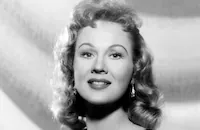
Virginia Mayo

Gene Nelson

Ruth Roman

Dick Wesson
Janice Rule
Ron Hagerthy
Richard Webb

Tommy Noonan
Peter Marshall
Hayden Rorke

Howard St. John
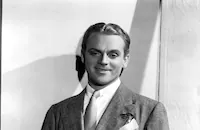
James Cagney

Gary Cooper
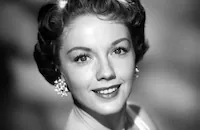
Virginia Gibson

Phil Harris

Frank Lovejoy

Lucille Norman
Louella Parsons

Randolph Scott
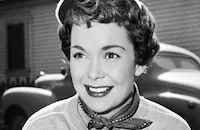
Jane Wyman

Patrice Wymore

Robert Arthur
Leroy Prinz

Ann Doran
Tommy Farrell
John Maxwell
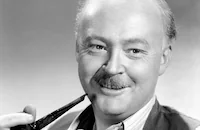
Don Beddoe
Mary Adams
Bigelowe Sayre
Eleanor Audley
Gordon Polk
Mort Thompson
Don Rockland
Jay Richards
Tommy Walker
Larry Carper
Robert Board
Al Cavens
Robert Hammack
Clark Burroughs
Ray Montgomery
Bill Neff
Stan Holbrook
Jill Richards
Joe Turkel
Rush Williams
Lyle Clark
William Hunt
Dorothy Kennedy
Elizabeth Flournoy
Dolores Castle
Jack Larson
Brian Mckay
Walter Brennan Jr.
Robert Karns
John Hedloe
Eddie Coonz
Frank Scannell
Karen Hale
Rodney Bell
Gene Hardy
James Brown
Steve Gregory
Richard Monohan
John Morgan
Joe Recht
Hurb Latimer
Dick Ryan
Bill Hudson
Sarah Spencer
Ezelle Poule
Crew
Maj. George E. Andrews U.s.a.f., S.a.c.
Robert Arthur
Ernest R. Ball
Gordon Bau
G. W. Berntsen
Sammy Cahn
Charles H. Clarke
Mel Dellar
Sammy Fain
Percy Faith
David Forrest
George Gershwin
Ira Gershwin
George Graff Jr.
Phil Harris
Ray Heindorf
Edward Heyman
Irving Kahal
Gus Kahn
Karl Kamb
John Klorer
John Klorer
Ted Mccord
James Monaco
Chauncey Olcott
Cole Porter
Leroy Prinz
Ruby Raksin
Leah Rhodes
Harry Ruskin
Francis J. Scheid
Maj. James G. Smith U.s.a.f., M.a.t.c.
Jule Styne
Dana Suesse
Henry Sullivan
Gertrude Wheeler
Joe Young
William Ziegler

Videos
Movie Clip




Film Details
Technical Specs

Articles
Starlift
Starring Doris Day and Ruth Roman as themselves and young Janice Rule as fictional actress Nell Wayne, Starlift opens at a bond rally in San Francisco. After appearing at the rally, the trio meets two airmen who talk the actresses into driving them back to Travis Field before they are shipped out. Sergeant Mike Nolan, played by comic actor Dick Wesson, is the archetypal schemer who thinks he is shrewder than he is, while his buddy, Corporal Rick Williams, played by Ron Hagerthy, is as sincere and shy as Nolan is conniving and cunning. As it turns out, Nell and Rick hail from the same small hometown and have much in common. The slight premise launches a story about patriotic stars who want to boost the morale of the troops and a sweet romance between a starlet and a soldier.
Once Day and Roman see the nervous young troops waiting to board planes to Korea, they devise a plan to bring their Hollywood peers to Travis Field to entertain outgoing and incoming soldiers in a show called Operation Starlift. In the meantime, gossip columnist Louella Parsons, who appears as herself, finds out about Nell and Rick, and she dubs them the Starlift Lovers. The two play along for the sake of the show, but Rick is angry at Nell because he believes she is using him for publicity, while Nell feels taken advantage of after learning that Mike and Rick are not being shipped to Korea. Instead, their duties are non-combatant: They fly recruits to and from Honolulu.
As Rick and Nell settle their differences, Operation Starlift concludes in a big show featuring songs, dances, and skits with some of Warners' major stars. Gary Cooper and Frank Lovejoy mug their way through a western skit; Gordon MacRae croons a few tunes, including a duet with Day; comic Phil Harris belts out a saloon song; Virginia Mayo performs an exotic tropical number; and Gene Nelson steals the show with his lively choreography and dancing.
Starlift was intended to support the real Operation Starlift program created by the Special Service Officers and the Hollywood Coordinating Committee. The program was originally designed to fly movie stars to Travis Field to entertain the wounded returning from Korea. Focusing on injured soldiers would have made for a downbeat musical, so the plight of the wounded is downplayed in the film though not completely eliminated. In one extended sequence, Day and Roman visit wounded soldiers in the base hospital. One of the troops poignantly remarks that he is "waiting to get home--the longest wait."
Ruth Roman had been instrumental in launching Operation Starlift, which accounts for her starring role in the film. However, the actress could neither sing nor dance, so devising a showcase scene for her was not as easy as it was for Day, who sings for the bedridden soldiers in the hospital. In Roman's odd solo scene, she shaves a wounded soldier in her extravagant evening gown and fur coat.
Most of the stars who contributed to the film Starlift were under contract to Warner Bros., but some of Hollywood's biggest entertainers participated in the real Operation Starlift, including Bob Hope, Debbie Reynolds, Jack Benny, Danny Kaye, Alan Ladd, Shelley Winters, Shirley Temple, and Jane Russell, among others. Every Saturday night, a group of stars flew to Travis Field, entertained departing soldiers in a big show in the Passenger Terminal Building, performed later in the hospital auditorium, and then returned to Hollywood the next day. Unfortunately, about a month before the film opened, Operation Starlift ended, reportedly from a lack of funds.
In addition to supporting the war effort and boosting morale, Starlift offered Warner Bros. an opportunity to promote its stable of stars. In 1951, the film industry was still fueled by the star system. Audiences attended movies based on the stars, and consequently, studios promoted their films via the stars. Stars, who were under long-term contracts to studios, were groomed by the studios. A star image was established for a performer, then roles carefully selected to support that image. Promotion and publicity were carefully crafted by a studio's public relations department to construct, reinforce, or sustain the designated image.
Not every entertainer or film actor in Starlift was under contract to Warner Bros., but the three principal stars certainly were. Janice Rule had just signed with Warners in 1951, the year the film was released, and her casting in the ingénue role as the fictional character Nell Wayne reflects the studio's efforts to introduce her. A slight role with little coloring, Nell Wayne is little more than the sweet love interest, but Rule is billed on the third title card in the credits, just after the film's title, which is enough to draw attention to her name. As the only female character involved in a romance, her performance was sure to be reviewed by critics, garnering attention for the actress in the press.
By 1951, Warner Bros. had already established Doris Day and Ruth Roman as movie stars. Roman, who had been signed in 1949, was known for her roles as the cool, mature leading lady in dramas and melodramas. She had just costarred in what would be her only bona fide classic, Alfred Hitchcock's Strangers on a Train (1951), and her casting in Starlift was designed to milk that recent success. Starlift also allowed Roman to exhibit a warmth and friendliness generally lacking in most of her roles.
From the standpoint of supporting her screen persona, Day probably benefitted the most from the exposure in Starlift. She had signed with Warners in 1948 and had already made nine films by the time production began. Her participation served as a showcase for her singing talents while reminding audiences of her previous films and her screen persona as a wholesome every-girl who is optimistic, funny, and warm-hearted. Her duet with Gordon MacRae, "You're Gonna Lose Your Gal," recalls their teaming in two previous Warners musicals, Tea for Two (1950) and the popular On Moonlight Bay (1951). The latter helped Day win the Photoplay Gold Medal for the favorite female star performance of 1951. Day also sings "S'Wonderful" to a group of new troops waiting in a holding area to depart for Korea, and "You Oughta Be in Pictures" to the wounded in the hospital, underscoring her all-American appeal. A comic interlude to brighten what might have been a disturbing or depressing scene involves Day and a young soldier who is talking to his brother by phone. It seems the brother doesn't believe that Doris Day is singing to his sibling, so the actress takes the phone and sets him straight by crooning a few bars of "Lullaby of Broadway" from her film of the same name released in March of that year.
Starlift was not well reviewed upon release: Bosley Crowther of The New York Times noted, "The acts are unspeakably slapdash and the romance is painful beyond words." However, it was one of several films that helped to land Day in the list of Top 10 box-office draws for 1951 by the trade publication Motion Picture Herald. For today's viewers, Starlift may seem corny and artificial, but it offers a snapshot of popular entertainment, circa 1950, when Hollywood still depended on the star system to fuel the industry. Within a few months, the system and the industry would undergo a series of changes that rendered films like Starlift a relic of the past.
Producer: Robert Arthur for Warner Bros.
Director: Roy Del Ruth
Screenplay: Karl Kamb and John D. Klorer
Cinematography: Ted McCord
Editor: William Ziegler
Art Director: Charles H. Clarke
Music: Ray Heindorf
Choreography: LeRoy Prinz
Costume Designer: Leah Rhodes
Cast: Herself (Doris Day), Herself (Ruth Roman), Nell Wayne (Janice Rule), Himself (Gordon MacRae), Sergeant Mike Nolan (Dick Wesson), Corporal Rick Williams (Ron Hagerthy), Colonel Callan (Richard Webb), Chaplain (Hayden Rorke), Turner (Tommy Farrell), James Cagney, Phil Harris, Frank Lovejoy, Lucille Norman, Randolph Scott, Gary Cooper, Jane Wyman, Patrice Wymore, Peter Marshall, and Louella Parsons (Guest Stars).
BW-104m.
by Susan Doll

Starlift
Quotes
Trivia
Notes
The working title of the film was Operation Starlift. An acknowledgment at the end of the film reads: "Warner Bros. wishes to express their appreciation and grateful thanks to the Department of Defense, the United States Air Force and the officers and airmen of Travis Air Force Base for their whole-hearted cooperation, which made this picture possible." Tommy Noonan and Peter Marshall's credits appeared onscreen as "Noonan and Marshall." According to Warner Bros. publicity notes, an actual "Starlift" program was inspired by Ruth Roman, who spoke to the press about the need for entertainment for the troops after she visited the San Francisco area on a publicity tour. When the Hollywood Coordinating Committee set up a program, Louella Parsons, motion picture editor for International News Service and Hearst newspapers, gave the program national publicity in her columns.
Footage of actual "Starlift" performances was used in the film. Several 1950s celebrities appeared briefly as themselves, including Phil Harris, who appears intentionally losing a poker game to boost the morale of his opponents, hospitalized soldiers. Portions of the film were shot at Travis Air Force Base in Fairfield, CA, and Birmingham Veterans' Hospital grounds and Metropolitan Airport in the San Fernando Valley, according to Warner Bros. production notes. The publicity notes also state that Gene Nelson suffered back problems and was out for three weeks during shooting. A November 1951 Los Angeles Times article points out that, although the film is about servicemen of the Korean War, Korea is never mentioned.














